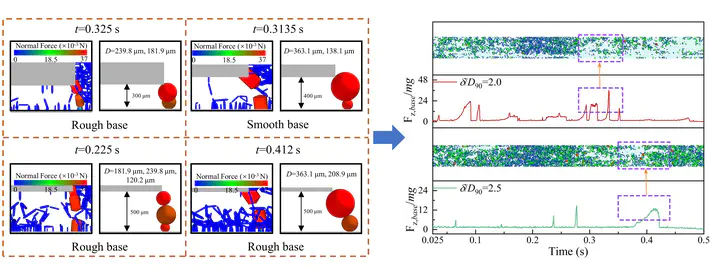
摘要
The spreading behaviour of cohesive sand powder is modelled by Discrete Element Method, and the spreadability and the mechanical jamming are focused. The empty patches and total particle volume of the spread layer are examined, followed by the analysis of the geometry force and jamming structure. The results show that several empty patches with different size and shapes could be observed within the spread layer along the spreading direction even when the gap height increases to 3.0D90. Large particles are more difficult to be spread onto the base due to jamming, although their size is smaller than the gap height. Size segregation of particles occurs before particles entering the gap between the blade and base. There are almost no particles on the smooth base when the gap height is small, due to the full-slip flow of particles. The difference of the spread layer and spreadability between the cases with rough and smooth base is reduced by the increase of the gap height. An interesting correlation between jamming effect and local defects (empty spaces) in the powder layer is identified. The resistance to particle rolling is important for the mechanical jamming reported in this work. The jammed particles with a larger size ratio tend to be more stable.